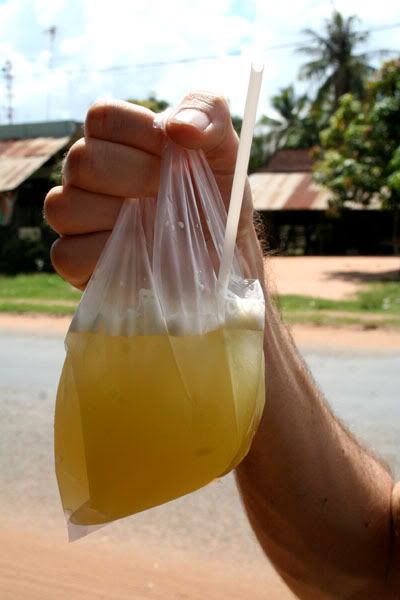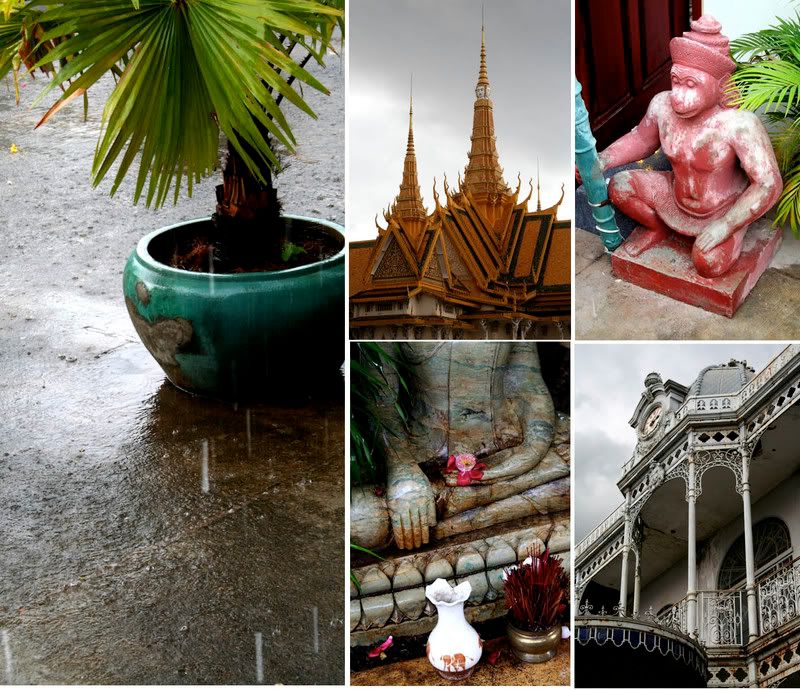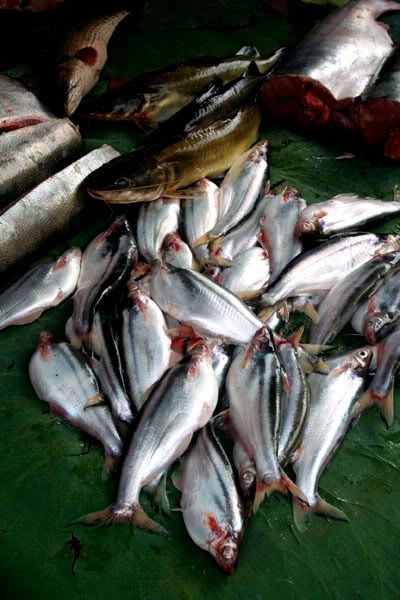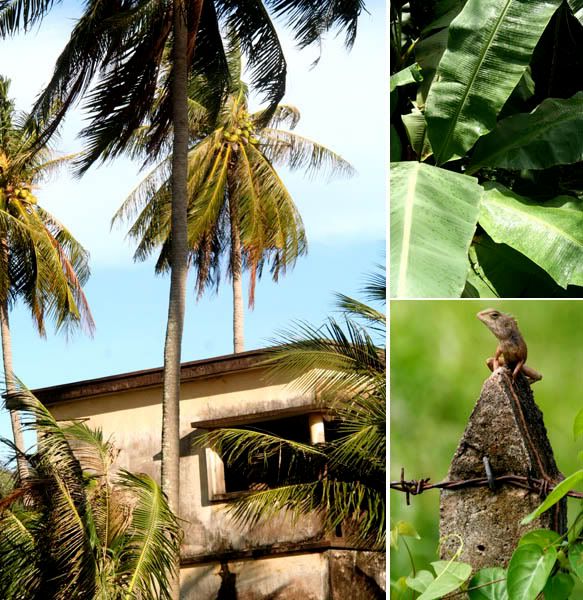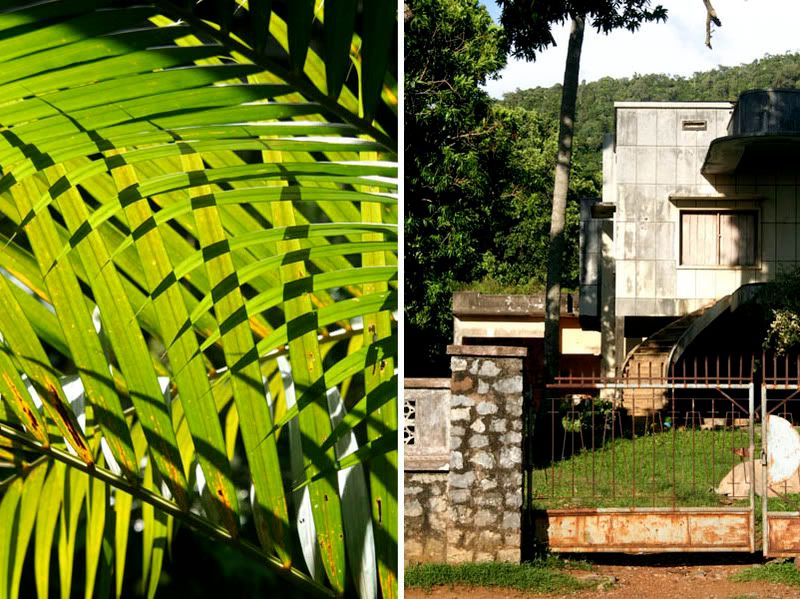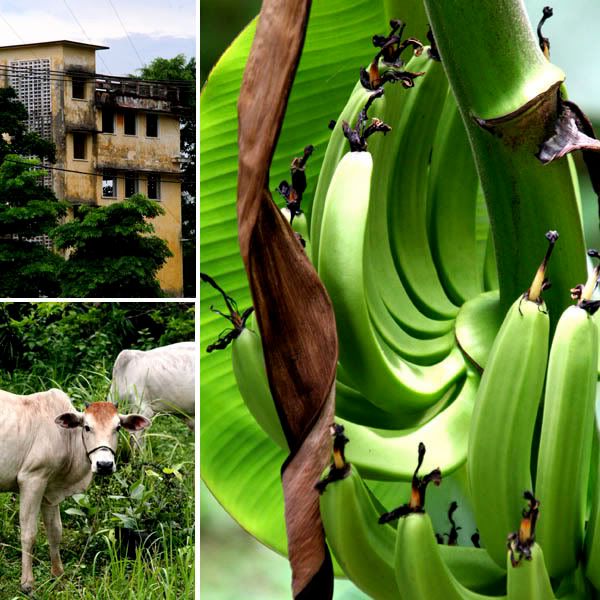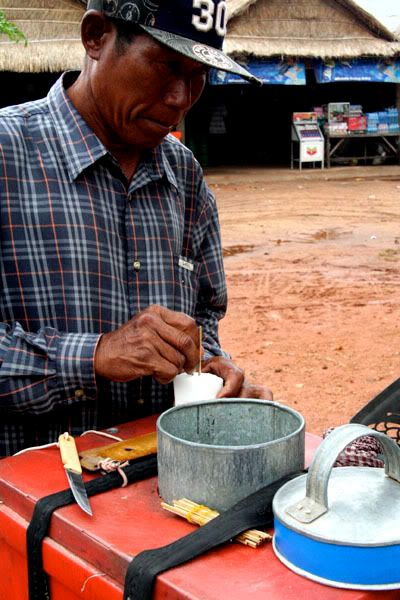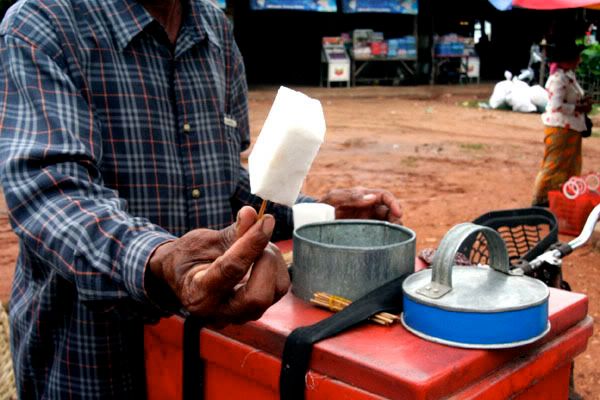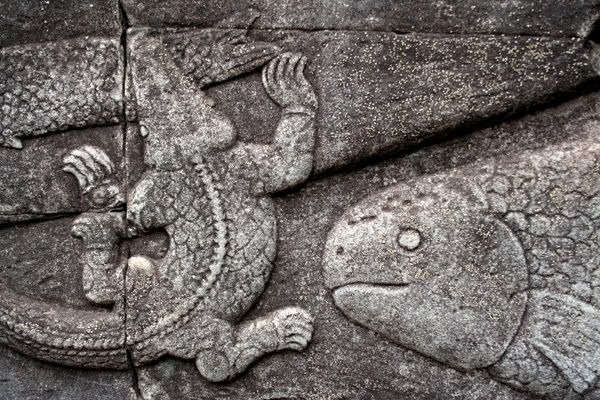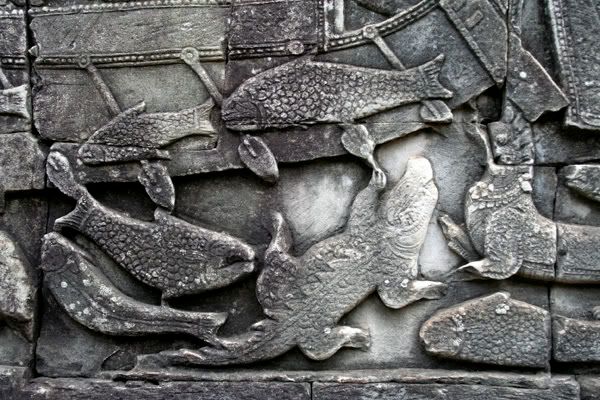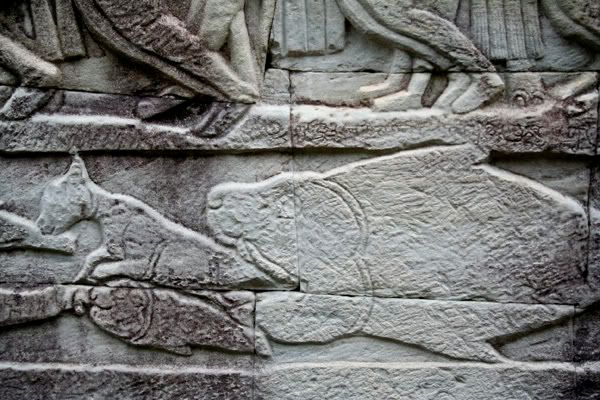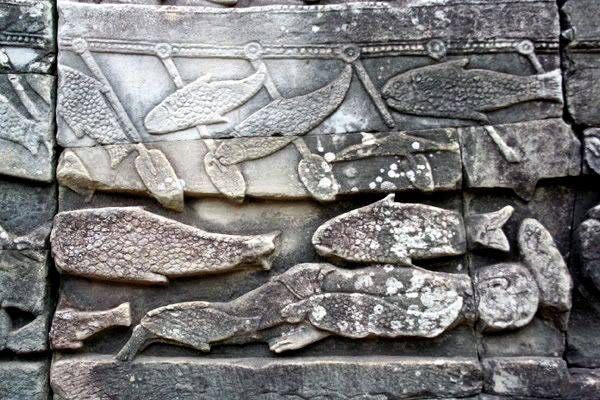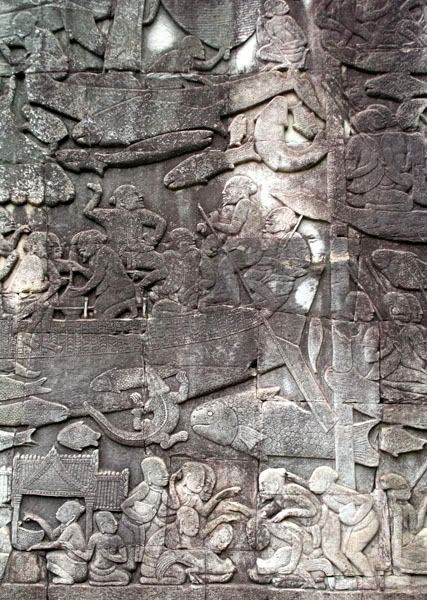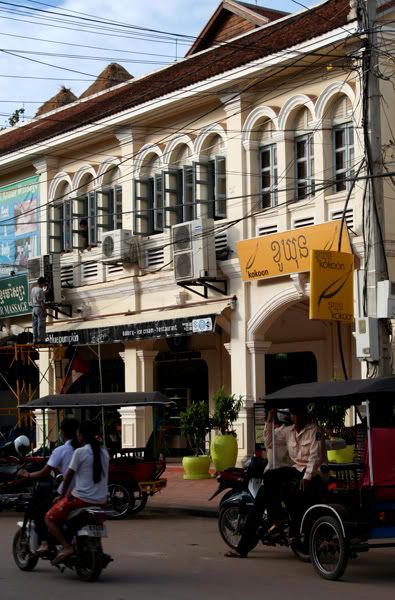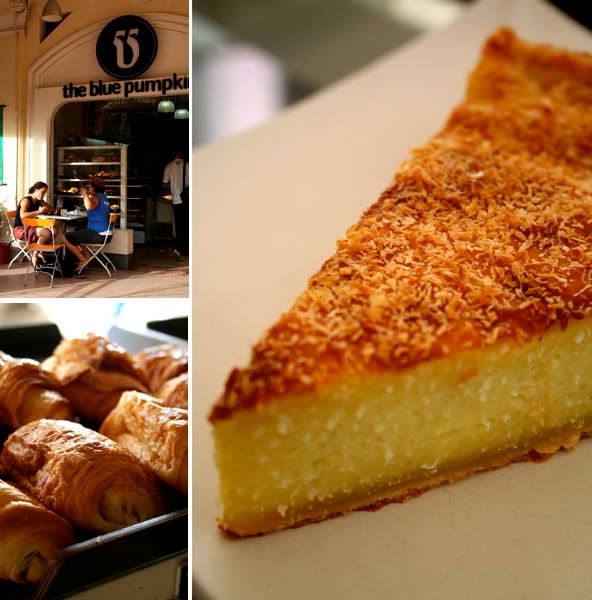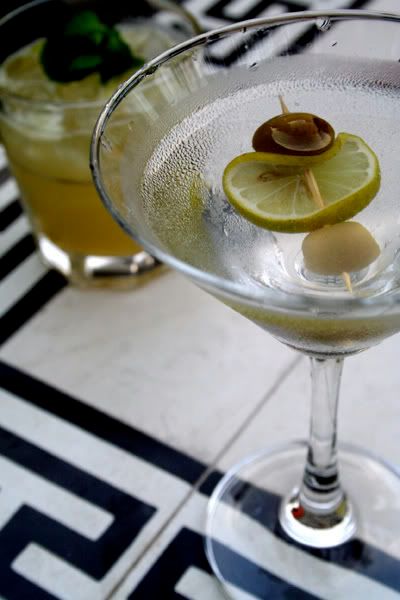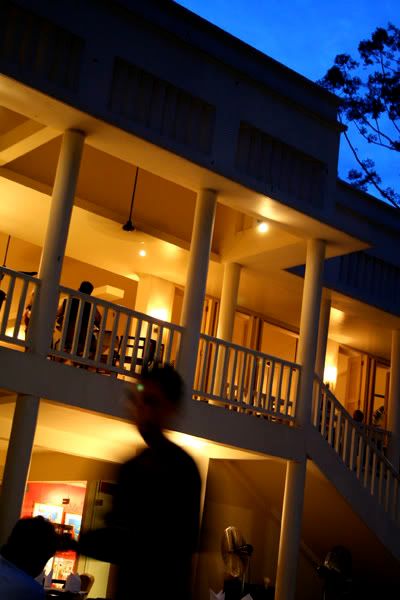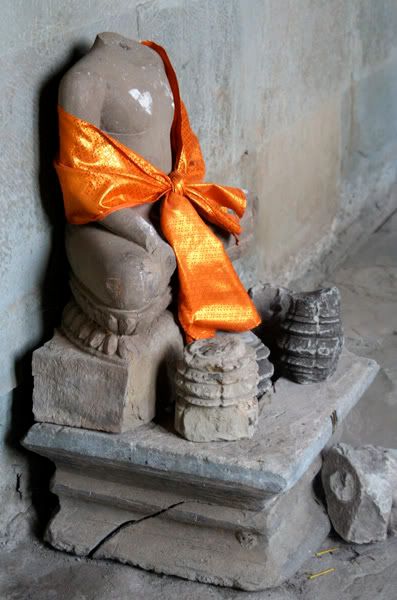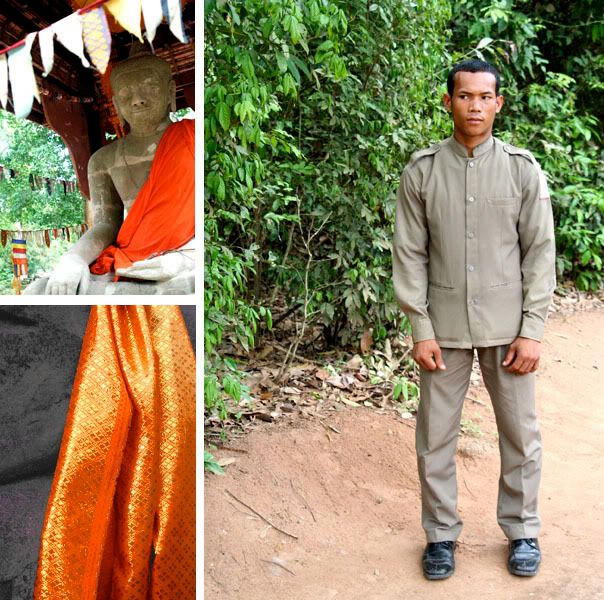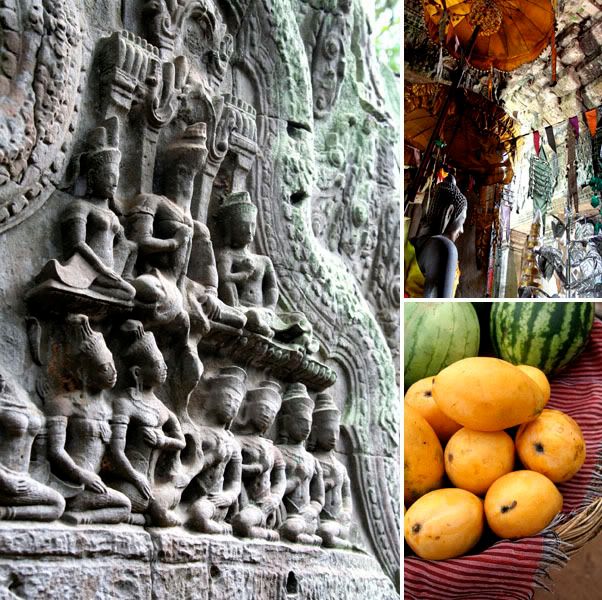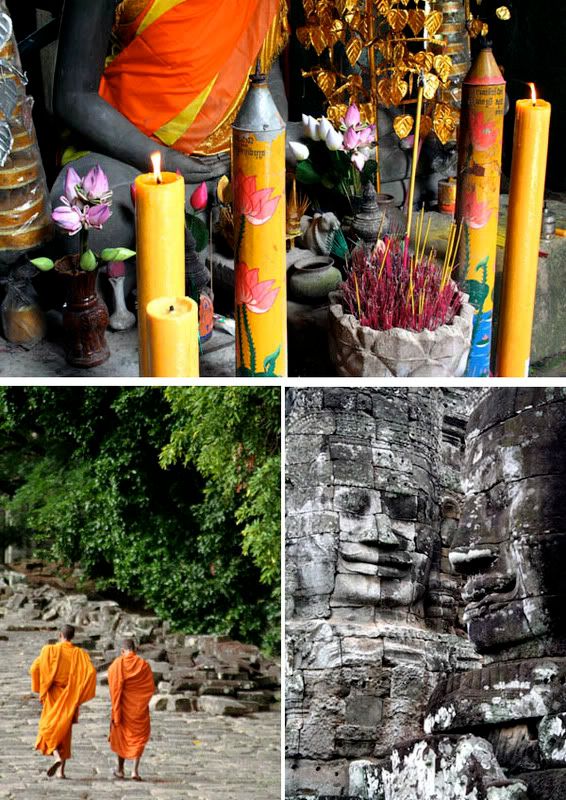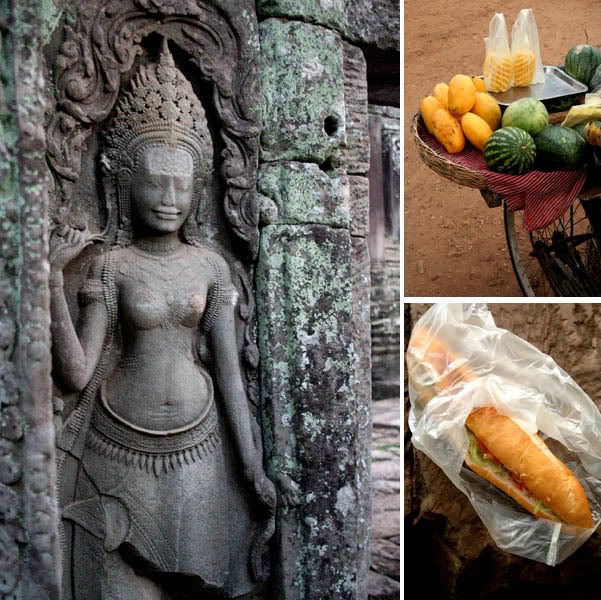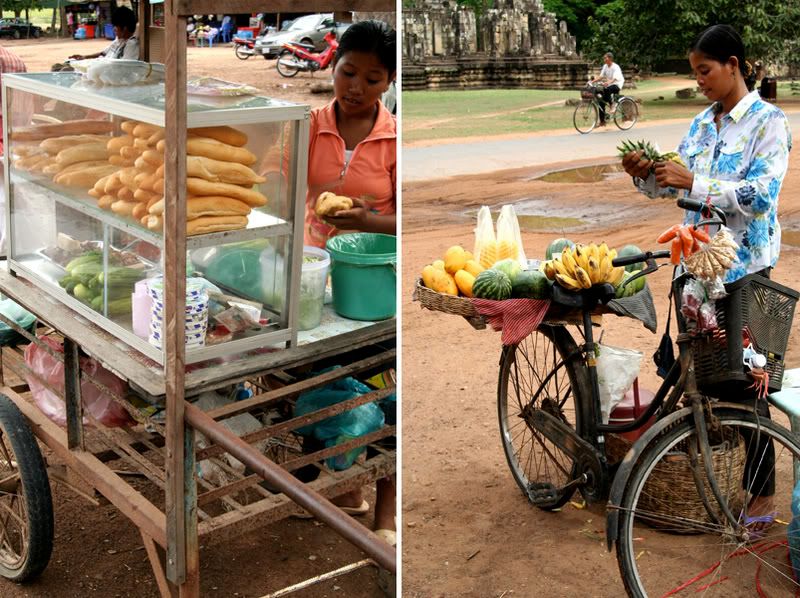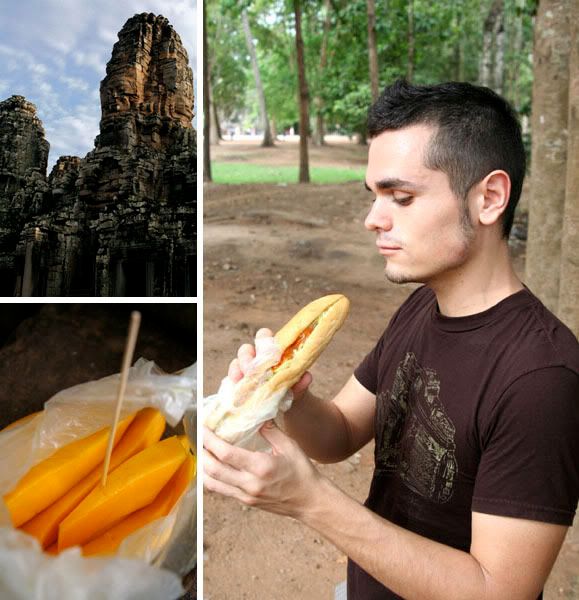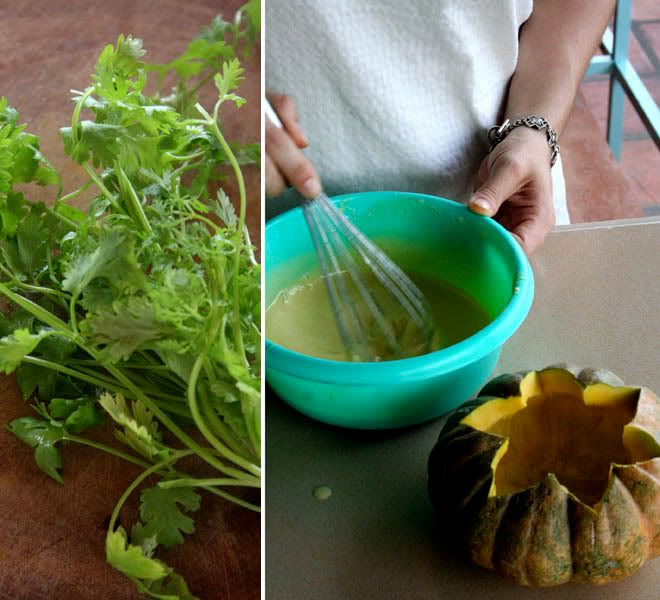
After fifteen minutes of waiting outside locked doors, we started to worry we were in the wrong place. The sign advertising
The Cambodia Cooking Class suggested that we were in the right place, but there was no on there to greet us and no where to sit and wait. Finally the doors opened, and we were greeted by a man rubbing sleep out of his eyes. “I just woke up,” he explained. We moved inside to continue waiting in the darkened shop interior. The man who greeted us disappeared out the front door, while another man, our cooking teacher, came downstairs yawning. He began sweeping out the shop and cleaning up empty beer bottles, giving us no sign of what was going on.
When Bordeaux and I first came to Southeast Asia a year ago, we set as a goal to take a cooking class in every country we visited. We easily accomplished that in
Thailand and
Laos, and eventually we managed to take a
class in Hanoi. The classes had all been wonderful. We got to prepare some good dishes, learned a little about Asian cooking, and got to learn a little about different culinary cultures. But as this class got off to its rough start, I was wondering if I was going to have to right my first bad review.
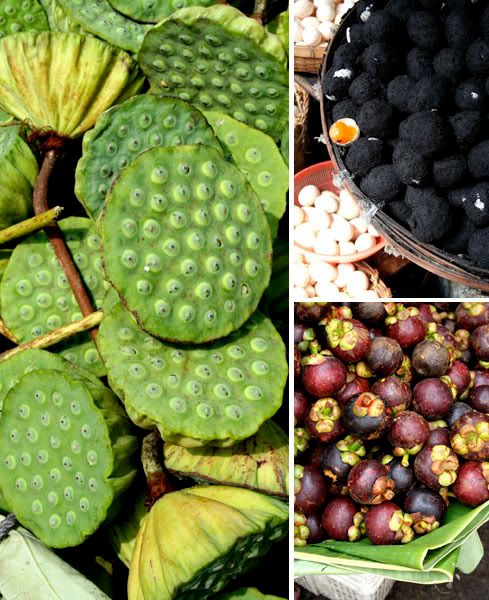
Close to fifteen minutes later, the other guy returned with a tuk tuk. We piled in, and headed for the market. Most cooking classes begin with a tour of a local wet market as a way to introduce some local foods, ingredients, and cooking methods. At the Thai Farm Cooking School, we were shown different qualities of rice, given a demonstration on making coconut milk and coconut cream, and lectured on the differences between different kinds of curry powder. In Luang Phrabang, we were shown a variety of fresh herbs and spices. In this cooking class, we walked through the market in a hurried single file.
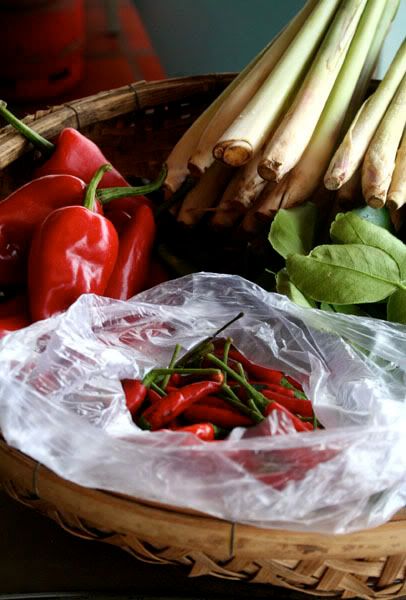
Thankfully, the tone of the class shifted rapidly once we got to the cooking school. This was no doubt helped by the setting of the kitchen, which was as relaxed as the market was hectic: a quiet top-floor patio, where we looked out over a busy baguette bakery and the lush garden of the Royal Palace. As we settled into the open-air surroundings, out teacher apologized for giving such a rushed tour of the market, and explained that the setting there is so crowded and busy that he wasn’t able to give any explanation. Instead, he took a selection of fresh herbs and vegetables out of the refrigerator, and talked us through them.
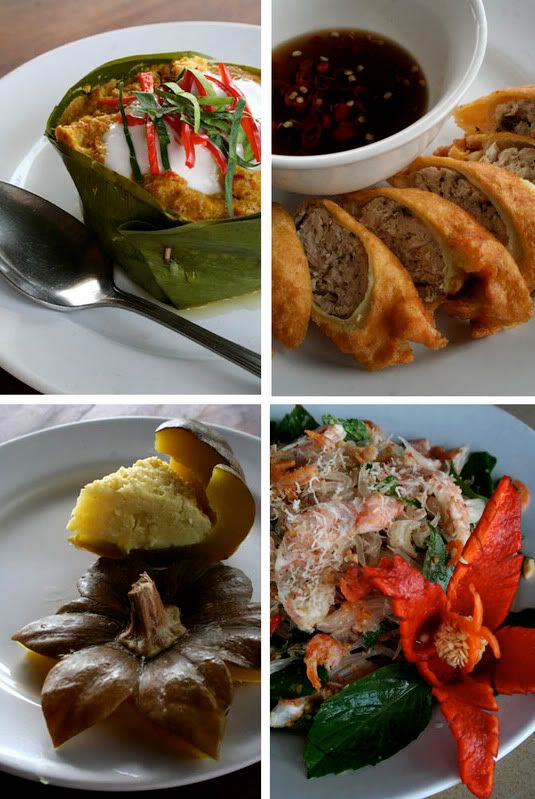
Over the course of the day, we each made (clockwise, from upper left corner): fish amok, a delicious custard-like curry that's steamed in a banana leaf cup; saing jayk, peppery pork and chicken 'sausages' that are fried in a banana flower roll; a citrusy prawn and pomelo salad made two ways- one with the prawns cooked, the other cured in a lime dressing; and for dessert, a creamy durian custard steamed in a pumpkin. We ate these dishes as we prepared them throughout the day, which gave the class a nicely languid atmosphere that fit with Phnom Penh's tropical heat. In between, we were given tastes of banana flower soup, and bites of fresh durian.
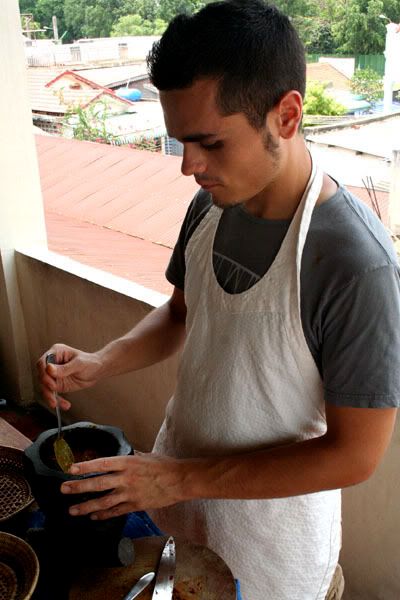
In the end, the class really was wonderful- enough so to make the rocky start totally irrelevant. Every class we’ve taken has had its strengths- whether it was the atmosphere of the class, the setting of the kitchen, or the glimpse into local culture afforded by the lesson. In this class, our guide was a trained chef, and there was a strong focus on food presentation. He gave us great tips on how to make our food look its best, and as a result, these were some of the most professional looking dishes I’ve ever made in a cooking class. He was an outstanding teacher, who helped us to make the cooking as effortless as he made it look. And most importantly of all, I left the class with the strong desire (and ability) to make some delicious Khmer dishes at home.
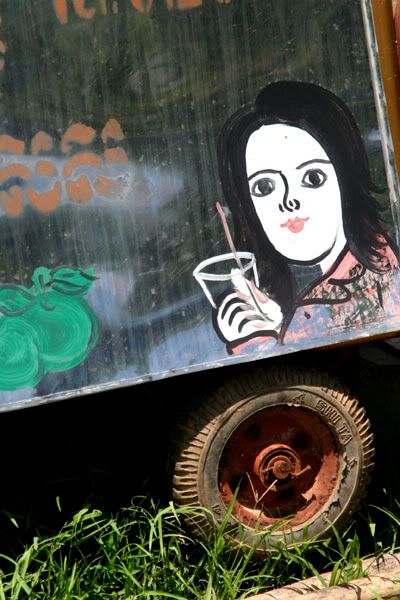 Sugar-cane juice may be the ideal drink for a scorching Cambodian day. Served in frosty mugs or plastic-bags, the pale golden liquid has a refreshingly citric sweetness. Though it's available throughout much of Southeast Asia, I'd never seen as many sugar-cane juice stands as I encountered in Cambodia. It seemed that every street, market, and noodle-shop had its own sugar-cane grinder at work. So in the interest of doing as the locals do, I ordered a bag.
Sugar-cane juice may be the ideal drink for a scorching Cambodian day. Served in frosty mugs or plastic-bags, the pale golden liquid has a refreshingly citric sweetness. Though it's available throughout much of Southeast Asia, I'd never seen as many sugar-cane juice stands as I encountered in Cambodia. It seemed that every street, market, and noodle-shop had its own sugar-cane grinder at work. So in the interest of doing as the locals do, I ordered a bag.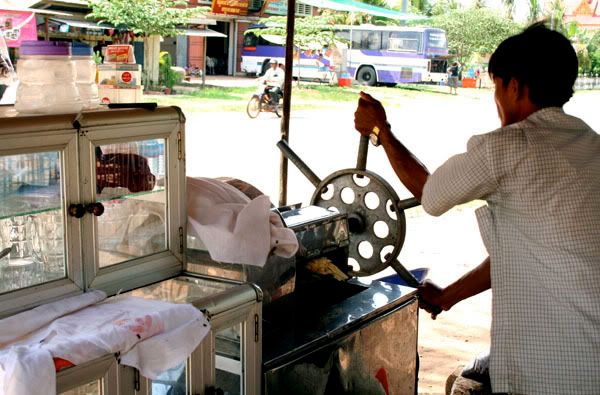 The vendor grabbed some stalks of sugar-cane that were chilling in water, and placed them in his grinder. Leaning his whole body into the wheel, he turned them through one, two, three times. He threw some of the mushy pulp into the bottom of a plastic bag, and then poured in the lemon-yellow juice. Dipping a straw in, I took a sip. It was not as sweet as I expected, but nicely tart. And it certainly took the edge off the midday heat.
The vendor grabbed some stalks of sugar-cane that were chilling in water, and placed them in his grinder. Leaning his whole body into the wheel, he turned them through one, two, three times. He threw some of the mushy pulp into the bottom of a plastic bag, and then poured in the lemon-yellow juice. Dipping a straw in, I took a sip. It was not as sweet as I expected, but nicely tart. And it certainly took the edge off the midday heat.